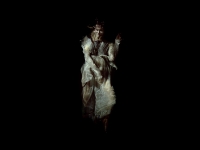
‘Torment’ dated 2014, from the series 'Rastvoyrennaya Pechal', Moscow 2012-2014.
One Unique Chromogenic Print; 35.4 x 26.4 inches / 90 x 67 cms . No Editions.
Printed on Fuji crystal archive paper, mounted to Dibond in a simple wood 'tray' frame.
+ II Artist Proofs (each a differing size and execution).
Provenance: exhibition 'Rastvoyrennaya Pechal' 2014. Triumph Gallery, Moscow. Sold direct from the artists studio, encrypted NFC authentication tag with signature biometrics recorded in Catalogue Raisonné.
GBP £7,800. Delivery instructions taken once sale is complete.
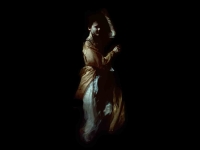
‘Exochorda Flanders’ dated 2014, from the series 'Rastvoyrennaya Pechal', Moscow 2012-2014.
One Unique Chromogenic Print; 23.6 x 17.7 inches / 60 x 45 cms . No Editions.
Printed on Fuji crystal archive paper, mounted to Dibond in a simple wood 'tray' frame.
+ II Artist Proofs (each a differing size and execution).
Provenance: exhibition 'Rastvoyrennaya Pechal' 2014. Triumph Gallery, Moscow. Sold direct from the artists studio, encrypted NFC authentication tag with signature biometrics recorded in Catalogue Raisonné.
GBP £4,250. Delivery instructions taken once sale is complete.
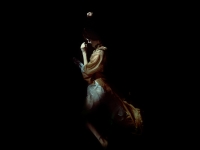
‘Flanders sleep’ dated 2014, from the series 'Rastvoyrennaya Pechal', Moscow 2012-2014.
One Unique Chromogenic Print; 35.4 x 26.4 inches / 90 x 67 cms . No Editions.
Printed on Fuji crystal archive paper, mounted to Dibond in a simple wood 'tray' frame.
+ II Artist Proofs (each a differing size and execution).
Provenance: exhibition 'Rastvoyrennaya Pechal' 2014. Triumph Gallery, Moscow. Sold direct from the artists studio, encrypted NFC authentication tag with signature biometrics recorded in Catalogue Raisonné.
GBP £7,800. Delivery instructions taken once sale is complete.
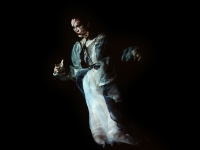
‘Ecclesiastes II' dated 2014, from the series 'Rastvoyrennaya Pechal', Moscow 2012-2014.
One Unique Chromogenic Print; 35.4 x 26.4 inches / 90 x 67 cms . No Editions.
Printed on Fuji crystal archive paper, mounted to Dibond in a simple wood 'tray' frame.
+ II Artist Proofs (each a differing size and execution).
Provenance: exhibition 'Rastvoyrennaya Pechal' 2014. Triumph Gallery, Moscow. Sold direct from the artists studio, encrypted NFC authentication tag with signature biometrics recorded in Catalogue Raisonné.
GBP £7,800. Delivery instructions taken once sale is complete.
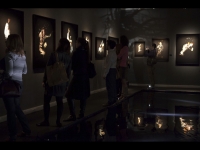
Installation of surreal floating cemetery public viewpoint at the opening of Rastvoyrennaya Pechal, Triumph Gallery. Moscow 2014.
​
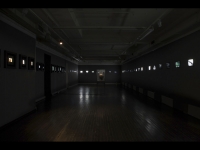
Installation view at the opening of Rastvoyrennaya Pechal, Triumph Gallery. Moscow 2014. Each of the 50 backlit hand made frames contain an original 8 by 10 inch transparency plate where the artist begins the series 'Transparency of a dream'
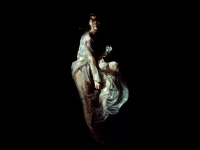
Artists Proof of ‘Jupiter’ dated 2014, from the series 'Rastvoyrennaya Pechal', Moscow 2012-2014.
One Unique Chromogenic Print; 36 x 24 inches / 91.4 x 60.9 cms . No Editions.
Printed on Fuji crystal archive paper, unmounted.
+ II Artist Proofs (each a differing size and execution).
Provenance: exhibition 'Rastvoyrennaya Pechal' 2014. Triumph Gallery, Moscow. Sold direct from the artists studio, encrypted NFC authentication tag with signature biometrics recorded in Catalogue Raisonné.
GBP £7,800
Delivery instructions taken once sale is complete.
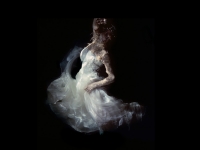
‘Vaganova’ dated 2014, from the series 'Rastvoyrennaya Pechal', Moscow 2012-2014.
One Unique Chromogenic Print; 35.4 x 26.4 inches / 90 x 67 cms . No Editions.
Printed on Fuji crystal archive paper, mounted to Dibond in a simple wood 'tray' frame.
+ II Artist Proofs (each a differing size and execution).
Provenance: exhibition 'Rastvoyrennaya Pechal' 2014. Triumph Gallery, Moscow. Sold direct from the artists studio, encrypted NFC authentication tag with signature biometrics recorded in Catalogue Raisonné.
GBP £7,800. Delivery instructions taken once sale is complete.
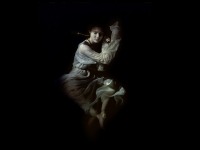
‘Eternally’ dated 2014, from the series 'Rastvoyrennaya Pechal', Moscow 2012-2014.
One Unique Chromogenic Print; 23.6 x 17.7 inches / 60 x 45 cms . No Editions.
Printed on Fuji crystal archive paper, mounted to Dibond in a simple wood 'tray' frame.
+ II Artist Proofs (each a differing size and execution).
Provenance: exhibition 'Rastvoyrennaya Pechal' 2014. Triumph Gallery, Moscow. Sold direct from the artists studio, encrypted NFC authentication tag with signature biometrics recorded in Catalogue Raisonné.
GBP £4,250. Delivery instructions taken once sale is complete.
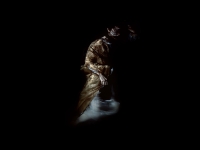
‘Eternity’ dated 2014, from the series 'Rastvoyrennaya Pechal', Moscow 2012-2014.
One Unique Chromogenic Print; 23.6 x 17.7 inches / 60 x 45 cms . No Editions.
Printed on Fuji crystal archive paper, mounted to Dibond in a simple wood 'tray' frame.
+ II Artist Proofs (each a differing size and execution).
Provenance: exhibition 'Rastvoyrennaya Pechal' 2014. Triumph Gallery, Moscow. Sold direct from the artists studio, encrypted NFC authentication tag with signature biometrics recorded in Catalogue Raisonné.
GBP £4,250. Delivery instructions taken once sale is complete.
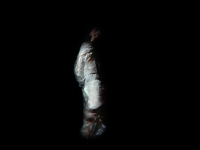
‘Scream’ dated 2014, from the series 'Rastvoyrennaya Pechal', Moscow 2012-2014.
One Unique Chromogenic Print; 47.2 x 35.4 inches / 120 x 90 cms . No Editions.
Printed on Fuji crystal archive paper, mounted to DiBond in simple wooden 'tray' frame.
+ II Artist Proofs (each a differing size and execution).
Provenance: exhibition 'Rastvoyrennaya Pechal' 2014. Triumph Gallery, Moscow. Sold direct from the artists studio, encrypted NFC authentication tag with signature biometrics recorded in Catalogue Raisonné.
GBP £11,750. Delivery instructions taken once sale is complete.
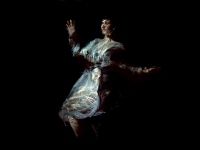
‘Ecclesiastes’ dated 2014, from the series 'Rastvoyrennaya Pechal', Moscow 2012-2014.
One Unique Chromogenic Print; 35.4 x 26.4 inches / 90 x 67 cms . No Editions.
Printed on Fuji crystal archive paper, mounted to Dibond in a simple wood 'tray' frame.
+ II Artist Proofs (each a differing size and execution).
Provenance: exhibition 'Rastvoyrennaya Pechal' 2014. Triumph Gallery, Moscow. Sold direct from the artists studio, encrypted NFC authentication tag with signature biometrics recorded in Catalogue Raisonné.
GBP £7,800. Delivery instructions taken once sale is complete.
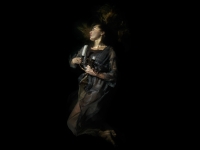
‘Girondale II’ dated 2014, from the series 'Rastvoyrennaya Pechal', Moscow 2012-2014.
One Unique Chromogenic Print; 35.4 x 26.4 inches / 90 x 67 cms . No Editions.
Printed on Fuji crystal archive paper, mounted to Dibond in a simple wood 'tray' frame.
+ II Artist Proofs (each aa differing size and execution).
Provenance: exhibition 'Rastvoyrennaya Pechal' 2014. Triumph Gallery, Moscow. Sold direct from the artists studio, encrypted NFC authentication tag with signature biometrics recorded in Catalogue Raisonné.
GBP £7,800. Delivery instructions taken once sale is complete.
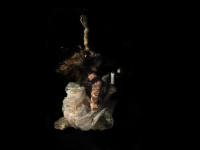
‘Alcmene’ dated 2014, from the series 'Rastvoyrennaya Pechal', Moscow 2012-2014.
One Unique Chromogenic Print; 35.4 x 26.4 inches / 90 x 67 cms . No Editions.
Printed on Fuji crystal archive paper, mounted to Dibond in a simple wood 'tray' frame.
+ II Artist Proofs (each a differing size and execution).
Provenance: exhibition 'Rastvoyrennaya Pechal' 2014. Triumph Gallery, Moscow. Sold direct from the artists studio, encrypted NFC authentication tag with signature biometrics recorded in Catalogue Raisonné.
GBP £7,800. Delivery instructions taken once sale is complete.

‘Girondale I’ dated 2014, from the series 'Rastvoyrennaya Pechal', Moscow 2012-2014.
One Unique Chromogenic Print; 35.4 x 26.4 inches / 90 x 67 cms . No Editions.
Printed on Fuji crystal archive paper, mounted to Dibond in a simple wood 'tray' frame.
+ II Artist Proofs (each a differing size and execution).
Provenance: exhibition 'Rastvoyrennaya Pechal' 2014. Triumph Gallery, Moscow. Sold direct from the artists studio, encrypted NFC authentication tag with signature biometrics recorded in Catalogue Raisonné.
GBP £7,800. Delivery instructions taken once sale is complete.
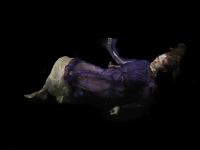
‘Lament in free fall’ dated 2014, from the series 'Rastvoyrennaya Pechal', Moscow 2012-2014.
One Unique Chromogenic Print; 47.2 x 35.4 inches / 120 x 90 cms . No Editions.
Printed on Fuji crystal archive paper, mounted to DiBond in simple wooden 'tray' frame.
+ II Artist Proofs (each a differing size and execution).
Provenance: exhibition 'Rastvoyrennaya Pechal' 2014. Triumph Gallery, Moscow. Sold direct from the artists studio, encrypted NFC authentication tag with signature biometrics recorded in Catalogue Raisonné.
GBP £11,750. Delivery instructions taken once sale is complete.
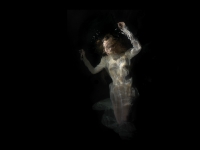
‘untitled Plate 044’ dated 2014, from the series 'Rastvoyrennaya Pechal', Moscow 2012-2014.
One Unique Chromogenic Print; 35.4 x 26.4 inches / 90 x 67 cms . No Editions.
Printed on Fuji crystal archive paper, mounted to Dibond in a simple wood 'tray' frame.
+ II Artist Proofs (each a differing size and execution).
Provenance: exhibition 'Rastvoyrennaya Pechal' 2014. Triumph Gallery, Moscow. Sold direct from the artists studio, encrypted NFC authentication tag with signature biometrics recorded in Catalogue Raisonné.
GBP £7,800. Delivery instructions taken once sale is complete.
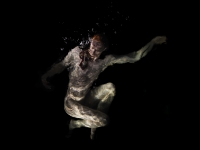
‘Cerberus’ dated 2014, from the series 'Rastvoyrennaya Pechal', Moscow 2012-2014.
One Unique Chromogenic Print; 47.2 x 35.4 inches / 120 x 90 cms . No Editions.
Printed on Fuji crystal archive paper, mounted to DiBond in a wood 'tray' frame.
+ II Artist Proofs (each a differing size and execution).
Provenance: exhibition 'Rastvoyrennaya Pechal' 2014. Triumph Gallery, Moscow. Sold direct from the artists studio, encrypted NFC authentication tag with signature biometrics recorded in Catalogue Raisonné.
GBP £11,750. Delivery instructions taken once sale is complete.
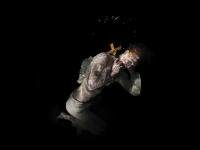
‘Geryon’ dated 2014, from the series 'Rastvoyrennaya Pechal', Moscow 2012-2014.
One Unique Chromogenic Print; 47.2 x 35.4 inches / 120 x 90 cms . No Editions.
Printed on Fuji crystal archive paper, mounted to DiBond in simple wooden 'tray' frame.
+ II Artist Proofs (each a differing size and execution).
Provenance: exhibition 'Rastvoyrennaya Pechal' 2014. Triumph Gallery, Moscow. Sold direct from the artists studio, encrypted NFC authentication tag with signature biometrics recorded in Catalogue Raisonné.
GBP £11,750. Delivery instructions taken once sale is complete.
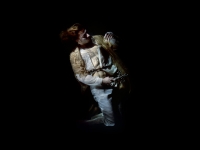
‘Fall of Heraclitus’ dated 2014, from the series 'Rastvoyrennaya Pechal', Moscow 2012-2014.
One Unique Chromogenic Print; 36 x 24 inches / 91.4 x 60.9 cms . No Editions.
Printed on Fuji crystal archive paper, unmounted.
+ II Artist Proofs (each a differing size and execution).
Provenance: exhibition 'Rastvoyrennaya Pechal' 2014. Triumph Gallery, Moscow. Sold direct from the artists studio, encrypted NFC authentication tag with signature biometrics recorded in Catalogue Raisonné.
GBP £7,800. Delivery instructions taken once sale is complete.
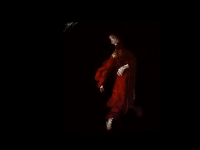
‘Wicca in red’ dated 2014, from the series 'Rastvoyrennaya Pechal', Moscow 2012-2014.
One Unique Chromogenic Print; 23.6 x 17.7 inches / 60 x 45 cms . No Editions.
Printed on Fuji crystal archive paper, mounted to Dibond in a simple wood 'tray' frame.
+ II Artist Proofs (each a differing size and execution).
Provenance: exhibition 'Rastvoyrennaya Pechal' 2014. Triumph Gallery, Moscow. Sold direct from the artists studio, encrypted NFC authentication tag with signature biometrics recorded in Catalogue Raisonné.
GBP £4,250. Delivery instructions taken once sale is complete.
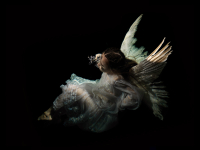
‘Mycenaean II’ dated 2014, from the series 'Rastvoyrennaya Pechal', Moscow 2012-2014.
One Unique Chromogenic Print; 47.2 x 35.4 inches / 120 x 90 cms. No Editions.
Printed on Fuji crystal archive paper, mounted to Dibond in a simple wood 'tray' frame.
+ II Artist Proofs (each a differing size and execution).
Provenance: exhibition 'Rastvoyrennaya Pechal' 2014. Triumph Gallery, Moscow. Sold direct from the artists studio, encrypted NFC authentication tag with signature biometrics recorded in Catalogue Raisonné.
GBP £11,750. Delivery instructions taken once sale is complete.
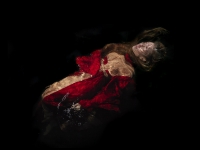
‘Arcana II’ dated 2014, from the series 'Rastvoyrennaya Pechal', Moscow 2012-2014.
One Unique Chromogenic Print; 47.2 x 35.4 inches / 120 x 90 cms . No Editions.
Printed on Fuji crystal archive paper, mounted to DiBond in simple wooden 'tray' frame.
+ II Artist Proofs (each a differing size and execution).
Provenance: exhibition 'Rastvoyrennaya Pechal' 2014. Triumph Gallery, Moscow. Sold direct from the artists studio, encrypted NFC authentication tag with signature biometrics recorded in Catalogue Raisonné.
GBP £11,750. Delivery instructions taken once sale is complete.
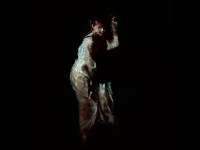
‘Exochorda’ dated 2014, from the series 'Rastvoyrennaya Pechal', Moscow 2012-2014.
One Unique Chromogenic Print; 23.6 x 16.5 inches / 60 x 42 cms . No Editions.
Printed on Fuji crystal archive paper, unmounted.
+ II Artist Proofs (each a differing size and execution).
Provenance: exhibition 'Rastvoyrennaya Pechal' 2014. Triumph Gallery, Moscow. Sold direct from the artists studio, encrypted NFC authentication tag with signature biometrics recorded in Catalogue Raisonné.
GBP £4,250. Delivery instructions taken once sale is complete.
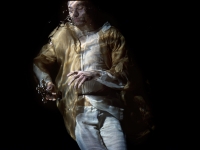
Artists Proof II ‘Heraclitus II’ dated 2014, from the series 'Rastvoyrennaya Pechal', Moscow 2012-2014.
One Unique Chromogenic Print; 36 x 24 inches / 91.4 x 60.9 cms . No Editions.
Printed on Fuji crystal archive paper, unmounted.
+ II Artist Proofs (each a differing size and execution).
Provenance: exhibition 'Rastvoyrennaya Pechal' 2014. Triumph Gallery, Moscow. Sold direct from the artists studio, encrypted NFC authentication tag with signature biometrics recorded in Catalogue Raisonné.
GBP £7,800. Delivery instructions taken once sale is complete.
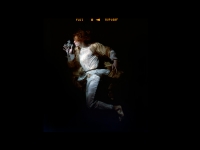
Artists Proof II ‘Heraclitus I’ dated 2014, from the series 'Rastvoyrennaya Pechal', Moscow 2012-2014.
One Unique Chromogenic Print; 36 x 24 inches / 91.4 x 60.9 cms . No Editions.
Printed on Fuji crystal archive paper, unmounted.
+ II Artist Proofs (each a differing size and execution).
Provenance: exhibition 'Rastvoyrennaya Pechal' 2014. Triumph Gallery, Moscow. Sold direct from the artists studio, encrypted NFC authentication tag with signature biometrics recorded in Catalogue Raisonné.
GBP £7,800
Delivery instructions taken once sale is complete.
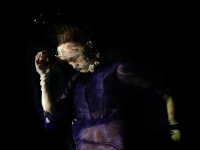
‘Newtons gaze’ dated 2014, from the series 'Rastvoyrennaya Pechal', Moscow 2012-2014.
One Unique Chromogenic Print; 23.6 x 17.7 inches / 60 x 45 cms . No Editions.
Printed on Fuji crystal archive paper, amounted to Dibond in a simple wood 'tray' frame.
+ II Artist Proofs (each a differing size and execution).
Provenance: exhibition 'Rastvoyrennaya Pechal' 2014. Triumph Gallery, Moscow. Sold direct from the artists studio, encrypted NFC authentication tag with signature biometrics recorded in Catalogue Raisonné.
GBP £4,250. Delivery instructions taken once sale is complete.

‘Arcana I’ dated 2014, from the series 'Rastvoyrennaya Pechal', Moscow 2012-2014.
One Unique Chromogenic Print; 47.2 x 35.4 inches / 120 x 90 cms . No Editions.
Printed on Fuji crystal archive paper, mounted to DiBond in simple wooden 'tray' frame.
+ II Artist Proofs (each a differing size and execution).
Provenance: exhibition 'Rastvoyrennaya Pechal' 2014. Triumph Gallery, Moscow. Sold direct from the artists studio, encrypted NFC authentication tag with signature biometrics recorded in Catalogue Raisonné.
GBP £11,750. Delivery instructions taken once sale is complete.
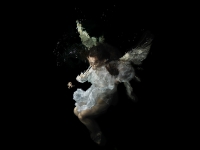
‘Mycenaean’ dated 2014, from the series 'Rastvoyrennaya Pechal', Moscow 2012-2014.
One Unique Chromogenic Print; 47.2 x 35.4 inches / 120 x 90 cms . No Editions.
Printed on Fuji crystal archive paper, mounted to aluminium & box framed in Ash behind museum ArtGlass.
+ II Artist Proofs (each a differing size and execution).
Provenance: exhibition 'Rastvoyrennaya Pechal' 2014. Triumph Gallery, Moscow. Sold direct from the artists studio, encrypted NFC authentication tag with signature biometrics recorded in Catalogue Raisonné.
GBP £12,250
Delivery instructions taken once sale is complete.

‘Mycenaean No. III’ dated 2014, from the series 'Rastvoyrennaya Pechal', Moscow 2012-2014.
One Unique Chromogenic Print; 35.4 x 26.4 inches / 90 x 67 cms . No Editions.
Printed on Fuji crystal archive paper, mounted to Dibond in a simple wood 'tray' frame.
+ II Artist Proofs (each a differing size and execution).
Provenance: exhibition 'Rastvoyrennaya Pechal' 2014. Triumph Gallery, Moscow. Sold direct from the artists studio, encrypted NFC authentication tag with signature biometrics recorded in Catalogue Raisonné.
GBP £7,800. Delivery instructions taken once sale is complete.
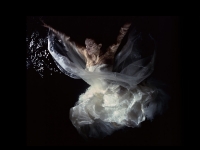
‘Legat’ dated 2014, from the series 'Rastvoyrennaya Pechal', Moscow 2012-2014.
One Unique Chromogenic Print; 35.4 x 26.4 inches / 90 x 67 cms . No Editions.
Printed on Fuji crystal archive paper, mounted to Dibond in a simple wood 'tray' frame.
+ II Artist Proofs (each a differing size and execution).
Provenance: exhibition 'Rastvoyrennaya Pechal' 2014. Triumph Gallery, Moscow. Sold direct from the artists studio, encrypted NFC authentication tag with signature biometrics recorded in Catalogue Raisonné.
GBP £7,800. Delivery instructions taken once sale is complete.
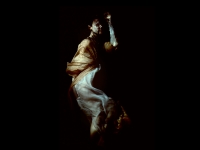
‘Exochorda II’ dated 2014, from the series 'Rastvoyrennaya Pechal', Moscow 2012-2014.
One Unique Chromogenic Print; 23.6 x 17.7 inches / 60 x 45 cms . No Editions.
Printed on Fuji crystal archive paper, mounted to Dibond in a simple wood 'tray' frame.
+ II Artist Proofs (each a differing size and execution).
Provenance: exhibition 'Rastvoyrennaya Pechal' 2014. Triumph Gallery, Moscow. Sold direct from the artists studio, encrypted NFC authentication tag with signature biometrics recorded in Catalogue Raisonné.
GBP £4,250. Delivery instructions taken once sale is complete.